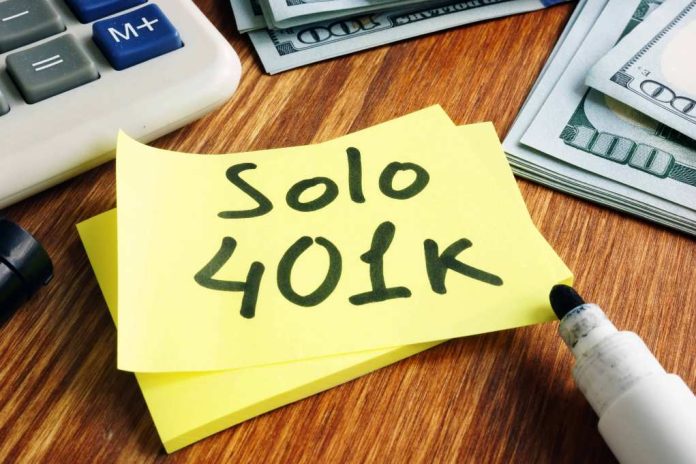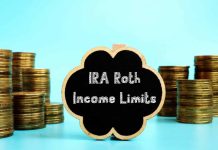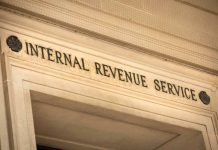
Want to learn how to set up a 401k for self-employed people? You’ve come to the right place. This complete guide will detail everything you need to know on the subject. We won’t just teach you how to set one up yourself – but whether or not you should in the first place. We’ll cover the pros and cons of this retirement account and provide you with a few alternatives.
If you are someone that is self-employed, you know just how complex it can be. And one big part of self-employment that often gets overlooked is a 401(k).
401(k) Plans are a type of retirement savings account that is available through employers. However, people that are self-employed are basically their own employers. That is why Self Employed 401(k) plans exist. They are known as Solo 401(k) plans. It can be a little tricky to understand how these retirement savings accounts work. But we’re here to help.
Below, we’ll answer a few questions you came here with. What is a 401K for self-employed people? Or, maybe you want to learn how to set up a 401K for self-employed people. Keep reading to discover answers to all this and more!
First – What is a 401K Plan, Exactly?
Before we talk about Self Employed 401(k) plans, it is important to make sure you have a clear understanding of a standard 401(k) plan. A 401(k) plan is a type of retirement account that a lot of American employers offer. This type of retirement plan is popular because it comes with a variety of tax advantages. The type of tax advantages that you can get from this account vary depending on the type of 401(k) plan.
Once an employee signs up for a 401(k) plan, they will need to make contributions. Depending on the employer, they may choose to match a portion or all of the contributions of the employee. Employer contributions will vary depending on the employer and each employer has its own setup! Learn more about how 401k matching works in our blog.
This is a type of investment account so employees will have to choose from a variety of investment options. However, the investment options are typically mutual funds. Mutual funds would include stocks, bonds, etc.
The two main types of 401(k)s are:
- Traditional 401(k) Plans
- Roth 401(k) Plans
But, there is one more style for those who are self-employed – and that is the solo 401K. Here’s what you need to know about this type of 401k plan…
Understanding 401(k) for When You’re Self Employed
Now that you have a basic understanding of 401(k) plans offered by employers, it’s time to learn about what it means to have a Self Employed 401(k) plan.
Also known as a solo 401(k), this 401(k) opportunity is a special retirement plan opportunity for small business owners that don’t have employees (besides their spouse). That means a solo 401(k) is a great opportunity for self-employment professionals like independent contractors, small business owners, sole proprietors, consultants, and more.
A Self Employed 401(k) is known as a Solo 401(k). It works similarly to a standard 401(k). However, there is one key difference to be mindful of! When it comes to a Solo 401(k), participants are basically both the employer and the employee. That means that they have the opportunity to contribute more annually than they could with a normal 401(k).
How Much Can You Contribute to a Solo 401(k)?
Many people don’t realize that a Self Employed 401(k) gives individuals the chance to save more than the typical 401(k) contribution limits. For a Solo 401(k), the limits have changed in 2022. The contribution limit for a Solo 401(k) in 2022 are:
- $61,000 for individuals younger than 50 years old
- $67,500 for individuals older than 50 years old
Benefits of a Solo 401(k)
Just like any decision you make in life, it is important to consider both the pros and cons. That’s because there are a variety of benefits and drawbacks that may impact how you feel about this retirement account. Some of the pros of a Self Employed 401(k) include:
- High Contribution Limits
- Tax Deductions
- Potential Roth Component
- Availability for a Spousal Solo 401(k)
High Contribution Limits
As we said earlier in this article, a Solo 401(k) will have higher contribution limits than a standard 401(k). That is why people like this opportunity. Since employer contributions and employee contributions are made by one person, a Solo 401(k) allows people to contribute more.
Tax Deductions
When it comes to a Solo 401(k) you may be able to consider your contributions as a tax deduction. For example, let’s say you maxed out your contribution limit for 2021 and contributed $58,000 into your Solo 401(k) as a self-employed person younger than 50 years old. You may be able to get a tax deduction worth that amount!
Potential Roth Component
When it comes to a Solo 401(k), you may be able to defer a Roth component. This would give you the opportunity to make deferrals into the account with after-tax funds. That means you have the opportunity to take funds out tax-free (as long as you follow the rules). When you take out funds tax-free that means you will not be responsible for any additional takes on the money you take out!
Availability for a Spousal Solo 401(k)
If you are self-employed but have your spouse working for you then they could take advantage of the Solo 401(k). This is only available if your spouse is employed by your business and you pay them a wage or salary that they claim as income.
Drawbacks of a Solo 401(k)
Even though there are some nice benefits that come along with a Solo 401(k), there are still some drawbacks to be aware of. Some of the cons that come along with a 401(k) include:
- No Employees
- IRS 5500 Filing
- Substantial and Recurring Contributions
No Employees
If you want to be eligible to get a Solo 401(k), there are qualifications you need to meet besides being self-employed. You will not be able to have any employees (besides your spouse). So if you plan on getting employees in the future then this may not be the best option for you.
IRS 5500 Filing
The Internal Revenue Service (IRS) requires people to file an annual report on Form 5500-SF if their account has $250,000 or more in assets by the end of the year. However, if your account has less than $250,000 then you may be exempt from the annual filing requirement!
Substantial and Recurring Contributions
The IRS also requires Solo 401(k) contributions to be substantial and recurring. This means in order for your Solo 401(k) to remain active, you will need to make contributions pretty regularly. Besides making regular contributions, the contribution amount needs to show an intention to continue the Solo 401(k). If not, then the contributions will be treated as discontinued.
So – all this said, are 401ks worth it for self-employed people? Ultimately, only you can answer this question for yourself. It may be worth reaching out to a tax planning or retirement professional to assist you in this decision.
Who Qualifies for a Solo 401(k)?
If you want to qualify for a Solo 401(k) you will need to meet these two qualifications:
- Have Self Employment Activity
- Not Have Employees (Besides a Spouse)
This plan is a popular option amongst self-employed individuals like independent contractors, sole proprietors, consultants, and more.
How to Set Up a 401K for Self-Employed People
Ready to learn how to set up a 401K for self-employed people? If you ultimately decide that this retirement savings plan is the right approach for you, here’s what you need to know about setting one up.
You can break down the process of setting up your Solo 401(k) into 3 easy steps:
- Make Sure You Understand Eligibility Requirements
- Get in Touch with a Solo 401(k) Provider
- Complete Any Documents and Disclosures to Open Your Account
We want to stress that the best way to learn about a Solo 401(k) is by getting in touch with a professional. They can answer any and all questions you have about this type of account. On top of that, they will help you understand how these accounts will work with your specific situation!
1. Make Sure You Understand the Eligibility Requirements
The IRS has regulations around who can and cannot get this type of 401(k). That is why you want to make sure you are eligible. Besides being self-employed and having no non-spouse employees, you will want to confirm qualifications with your plan administrator. They can answer any questions you have about Solo 401(k) eligibility.
2. Get in Touch with a Solo 401(k) Provider
This is one of the most important steps when it comes to setting up your Solo 401(k). That’s because your provider is going to be the one to administer your Solo 401(k). You will want to find a Solo 401(k) plan that is straight to the point, simple, and cost-effective. The best plan will be one that considers your current situation and future goals! When looking for a Solo 401(k) provider you will want to keep these 3 aspects in mind:
- Cost of the Plan
- Level of Management
- Investment Flexibility
3. Complete Any Documents and Disclosures to Open Your Account
Once you find your Solo 401(k) provider you will need to review documents and disclosures in order to set up your plan. Typically your provider will give you documents that can include the following:
- Adoption Agreement
- Client Agreement
- ERISA 404(c) Plan Information
- Establishing a Qualified Retirement Plan (QRP)
- External Transfer Form
- Participant Application
- Designation of Beneficiary
- Privacy Statement
- QRP Amendment Kit
- QRP Basic Plan Document
- Rates and Fees
- Section 408(b)(2) Disclosure
- Summary Cash Balance Form
During this process, it’s important to note that you will need to provide information. This includes personal details, your employer identification number (EIN), and more. At this time, you will also need to make decisions on your investments. This includes deciding which investment options like mutual funds you want to put your money towards.
This part is important in making sure you understand how your plan works so be sure to ask any questions during this time! Once you review the disclosures and documents it will be time to open your account and you will be set!
Final Thoughts on How to Set Up a 401K Plan for Self-Employed People
There you have it – how to set up a 401k plan for self-employed people. We explained what a 401k for self-employed people is, and we even explained whether or not this is the right type of account for you. At this point, the only thing left to do is determine if this is the right approach for you. You may also want to ponder the 401k vs IRA debate we’ve compiled, as that is another popular choice.
Want to learn more about this type of retirement savings account? We have a complete guide on what to do with 401k when changing jobs, 401ks and FICA taxes, and 401k garnishment. We also have great resources on self-employment – like why are self-employment taxes higher, where to declare self-employment income, and how much self-employment income is taxable. Explore our blog today to prepare yourself for a comfortable, lucrative financial future!




























